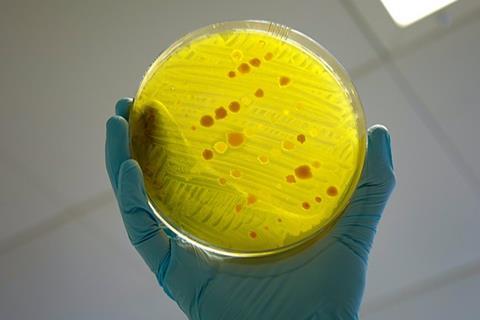Antimicrobial resistance (AMR) contributes to millions of deaths annually, a problem that only becomes more pressing and will be a focus of a United Nations high-level meeting in New York later this month.

Ahead of this key meeting, York University researchers with the Global Strategy Lab (GSL) and a group of international collaborators have proposed a set of unifying goals that emphasize an all-in approach where antibiotics and other antimicrobials are available to everyone, especially those who need them the most, and millions of lives are saved.
READ MORE: AMI publishes first policy paper in new Sustainable Microbiology
READ MORE: New UK research networks will tackle antimicrobial resistance
GSL’s co-director and Faculty of Health Assistant Professor Mathieu Poirier, who was a key player in drafting the proposal, says that the goals, while ambitious, are also wholly achievable.
Global threat
“Similar to climate change, AMR poses a threat to human and animal health, food security and economic wellbeing globally, so tackling the problem successfully requires a One Health approach that takes all of these factors into account,” says Poirier. “Low- and middle- income countries face even greater challenges with less access to life-saving antimicrobials, fewer resources and a higher burden of AMR, and children under 5 are particularly affected.”
Poirier and other GSL colleagues had also convened a meeting earlier this year in Italy with other global health and policy experts, and the resulting discussion led to the creation of the 1-10-100 goals, outlined in a paper published recently in the journal Globalization and Health.
The goals look at three key areas:
- One health: The interconnections between people, animals, agrifood systems, and environment means a collaborative approach involving multiple sectors is fundamental
- 10 million lives saved: The researchers say 10 million lives could be saved by 2040 through efforts to prevent and properly treat infections while preserving antimicrobial effectiveness. This would include enhanced vaccination programs, improved water, sanitation, and hygiene infrastructure and improvements to infection prevention and control
- 100 per cent sustainable access: Antimicrobials must be available and affordable for all, used only when needed, and new antimicrobials must be developed for future use
Since that meeting, other goals and targets have been presented, including a 10 per cent reduction in mortality from AMR, a one-fifth reduction in inappropriate human antibiotic use, and reducing unnecessary animal antibiotic use by 30 per cent.
Rapid proliferation
While AMR is the result of a natural process where bacteria, viruses and other microbes evolve to develop resistance to the drugs used to combat illness, the rapid proliferation of drug-resistant infections is a huge threat globally.
Poirier will be in New York at the time of the UN high-level meeting on AMR Sept. 26, and says that regardless of the meeting’s outcome, it’s crucial that UN member states do not take a merely technical approach to setting targets.
“This is a historic opportunity for member states to introduce unifying goals that rally public and political support to accelerate policy action to mitigate AMR,” says Poirier, also York Research Chair in Global Health Equity. “The stakes are huge; there’s literally millions of lives at stake. While AMR does affect some countries disproportionately, none of us are immune.” In a Conversation Canada article, Poirier further elaborates on the topic.







No comments yet